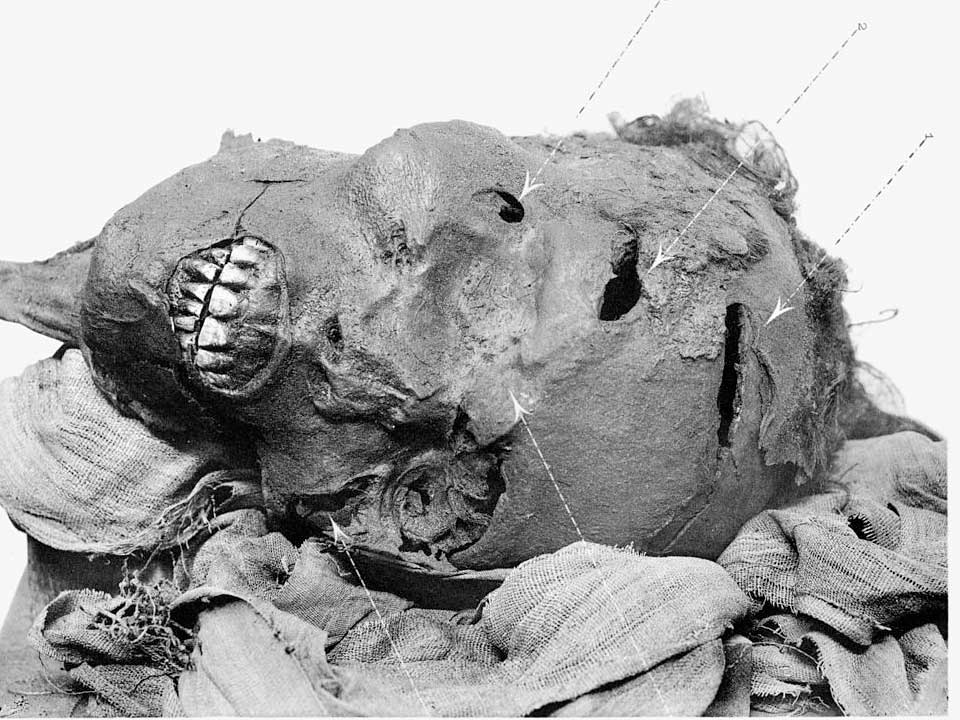Second Intermediate Period Mummification

Again divided and now under the rule of the Hyksos culture from the north, Egyptians greatly varied their mummification techniques. While internal organs were still being removed via an incision on the left side of the stomach, Egyptians experimented with limb positions.
The famous Queen Tiye was mummified during this era. She was found with one arm over her chest and one at her side. Her fingernails were painted red and black, and the hand on her chest is curled inward, as if she was holding something.
While it was still common for arms to be laid out at the mummy’s sides, it became popular for male mummies to have their arms placed over their genitals. The well-known position, with the arms crossed over the chest, emerged. By the end of the Second Intermediate Period, this style, referred to as “Osirian”, was the most popular arm placement among Egyptian nobility. Despite it being a position reserved for royals, it has become one of the most common ways mummies are depicted in popular media.

At-A-Glance
- A divided Egypt, ruled by the Hyksos people, lost many cultural traditions.
- Organs were still being removed via an incision on the left side of the stomach.
- Arm positions began to change, and the “Osirian” position (arms crossed over chest) emerged.


